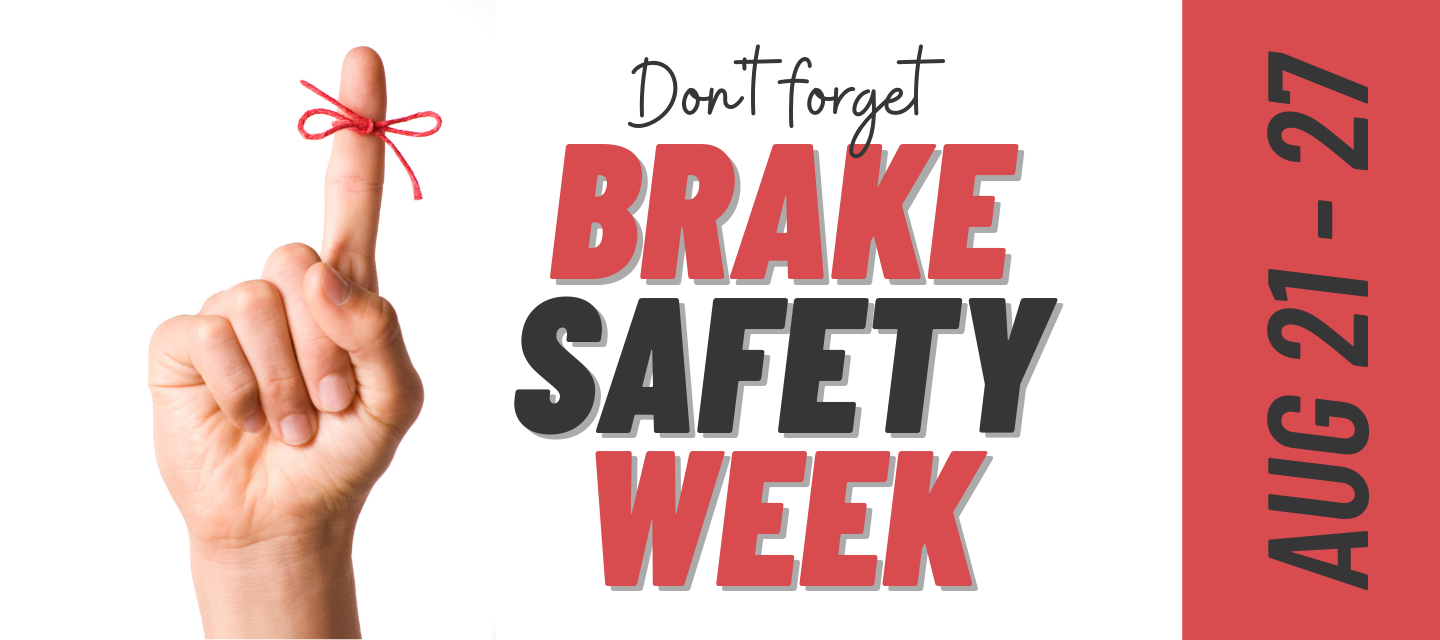CVSA Brake Safety Week Happening August 21-27

The Commercial Vehicle Safety Alliance (CVSA) announced that this year’s Brake Safety Week will be held August 21-27.
If you are not familiar Brake Safety Week, it is a time when inspectors throughout the United States, Canada, and Mexico conduct their annual brake safety inspection, enforcement, and education initiatives. The focus area for this year is brake hose/tubing chafing issues, but inspectors will be capturing and providing data on all brake-related out-of-service violations.
The results from CVSA’s International Roadcheck 2021 showed that brake violations accounted for the most of any category of vehicle violations: 38.9%!
To address this, Brake Safety Week aims to identity and remove CMVs that have critical violations and encourage proactive vehicle maintenance. CMVs that do not have critical violations will receive a CVSA decal. This week is also an opportunity for outreach and education on the importance of brake safety.
“Poorly maintained brake systems can reduce the braking capacity and stopping distance of large trucks and motorcoaches, which poses a serious risk to driver and public safety,” said the CVSA president, Capt. John Broers with the South Dakota Highway Patrol. “In those split-second emergency situations, the proper functionality of the brake systems on large commercial motor vehicles is crucial.”
Brake Safety Week comes on the heels of the Roadcheck 2022 in May and Operation Safe Driver Week in July, and is part of a concentrated effort by the CVSA to improve both driver and vehicle safety.
What will happen during an inspection?
Inspectors will perform a standard Level I and Level V inspection, and report their findings to CVSA. As always, inspectors will be looking at everything, but this year they will be placing special emphasis on brake hose/tubing chafing violations.
During the brake portion of an inspection, an enforcement agent will be:
- looking for missing, non-functioning, loose, contaminated or cracked parts on the brake system
- checking for non-manufactured holes (such as rust holes and holes created by rubbing or friction)
- making sure there are no broken springs in the spring brake housing section of the parking brake
- listening for audible air leaks around brake components and lines
- ensuring the air system maintains air pressure between 90-100 psi (620-690 kPa)
- checking for S-cam flip-over
- measuring pushrod travel
- checking that slack adjusters are the same length (from center of S-cam to center of clevis pin)
- making sure the air chambers on each axle are the same size
- inspecting the required brake-system warning devices, such as ABS malfunction lamp(s)
- inspecting the low air-pressure warning devices
- ensuring the breakaway system is operable on the trailer
- inspecting the tractor protection system, including the bleed-back system on the trailer
Additional information on CVSA inspections and their requirements can be found here.
how to prepare for an inspection
The best way to prepare is to do your pre- and post-trip inspections! This proactive maintenance will not only ensure your safety, but will help reduce general and brake-related violations. It is also important to perform a thorough evaluation of your truck to make sure it meets the inspection criteria listed above.
The CVSA also provided the following guidance to ensure your truck is in tip-top shape:
- Inspect brake hoses and tubing as part of your pre-trip and post-trip inspections.
- Report any issues in your driver vehicle inspection reports (DVIR).
- Look for brake hoses that are making contact with steering, suspension, brake or other components, or the tires or frame.
- Listen for air leaks, identify the location of the leak, and make the necessary repairs before leaving.
- Brake hoses should not be kinked or improperly repaired.
- Air lines should not hang down and touch the tractor deck or frame.
- When you find air hoses or tubing making contact with other components, check for abrasion wear, and protect, secure or move the hose to prevent wear.
- If a hose or tubing is chafing and has caused a reduction in diameter or, on thermoplastic hoses, the secondary white color is visible, a violation exists.
- If a hose is worn so that the reinforcement ply is cut or abraded, this is an out-of-service condition and should be replaced immediately.
- Make sure all repairs are consistent with manufacturer’s requirements and guidelines.
Double check that you have the correct paperwork, either physical or electronic copies, and that it’s easily accessible during an inspection. If you notice something is missing now you have time to get it replaced.
Important paperwork includes:
- driver’s license
- truck and trailer registration
- fuel permits
- insurance cards
- annual inspection stickers for both truck and trailer
- instructions for the ELD
Obey the laws! Wear your seat belt, don’t speed, fully stop at lights and stop signs, and use the left lane for passing. If you have a restriction, make sure you have the appropriate supplies. If you wear glasses, make sure you have them on. If you use hearing aids, make sure you have spare batteries. And stay off your cell phone!
Keep a safety mindset and don’t get too comfortable - it can be easy to overlook things when you do. And stay off your cell phone!
how to act during an inspection
Be professional, kind, and courteous. Officers are just regular people wearing uniforms. If you treat them well, it will go much better for you.
If you feel you are being written a ticket unfairly, do not be confrontational. The company you work with can and will appeal the result if necessary. Calmly ask for clarification on any violations so you can explain them to your company's safety personnel correctly and with full understanding.
operation airbrake
Brake Safety Week is part of CVSA’s Operation Airbrake, a comprehensive program dedicated to improving brake safety throughout North America. The goal is to reduce the number of highway crashes caused due to faulty braking systems by performing roadside inspections, as well as educating drivers, mechanics, owner-operators, and others on the importance of proper brake inspection, maintenance, and operation.

More information on Operation Airbrake can be found here.
commitment to safety
Brake Safety Week highlights the hard work and commitment to safety by both drivers and inspectors. It is important that we all work together to ensure the safety of our drivers, our trucks, and everyone else who shares our roads.
The results from Brake Safety Week will be release in the fall.

